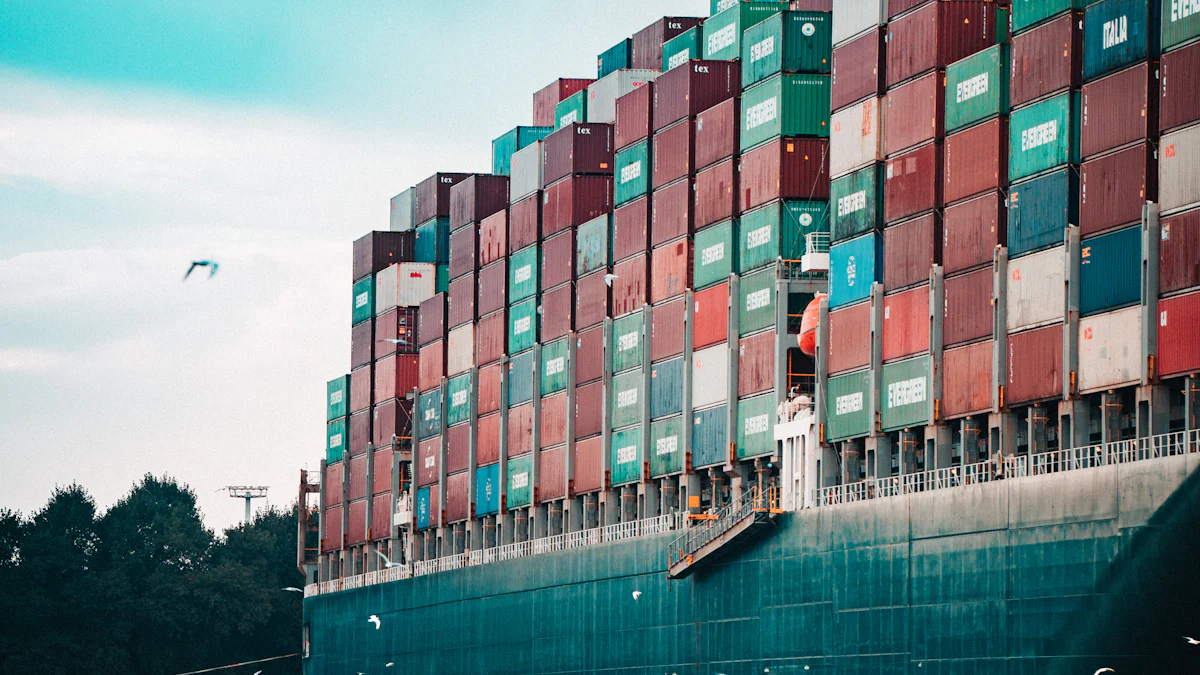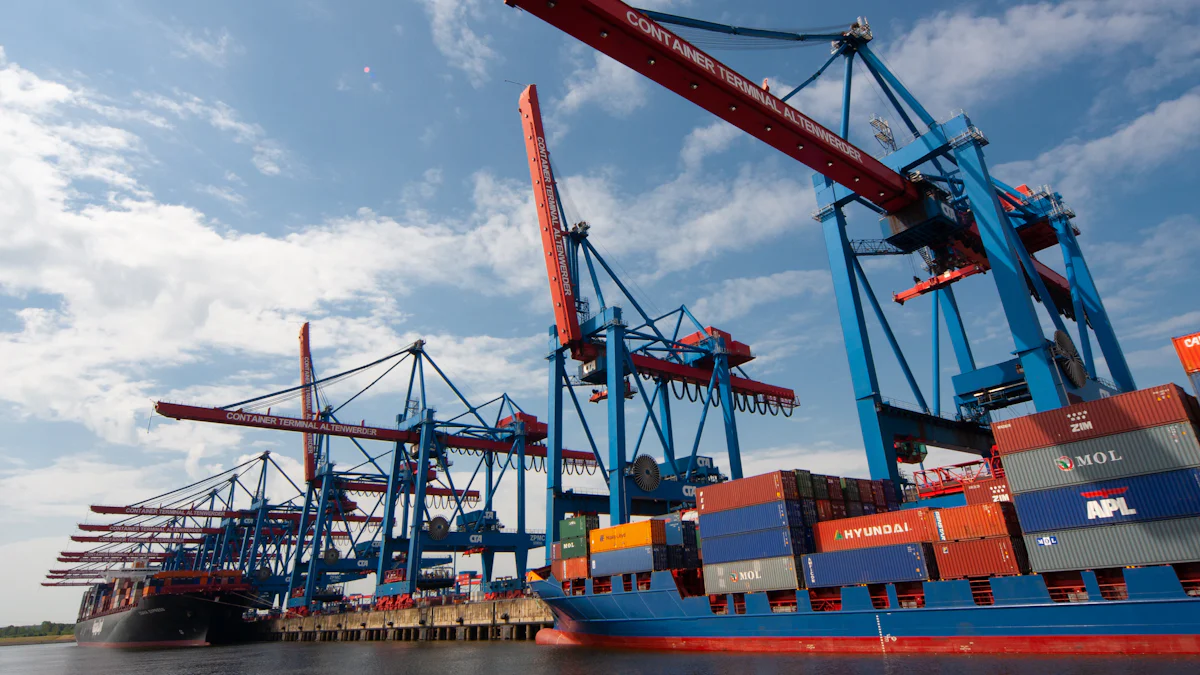Why Does Supply Chains Matter for Global Trade Matter?

The World Trade Organization (WTO) has forecasted a 2.6% increase in global goods trade volume for 2024. This positive growth trend is attributed to a further easing of global inflationary pressures and a subsequent rise in real incomes, which in turn boosts consumer demand. Despite a 1.2% decline in global goods trade volume in 2023, WTO Director-General Ngozi Okonjo-Iweala expressed optimism that the recovery momentum will continue, with an anticipated growth of 3.3% in 2025.
The Role of Supply Chains in Global Trade

Efficient resource allocation is not only about cutting costs but also about maximizing the value derived from available resources. Walmart and Amazon, giants in the retail industry, have demonstrated this principle through their logistics management strategies. By streamlining order processing and investing in branded delivery trucks, these companies have enhanced operational efficiency while ensuring timely deliveries to customers.
Dell, a pioneer in computer technology, adopted an innovative approach to resource allocation within its supply chain. By avoiding large inventories and implementing just-in-time manufacturing practices, Dell saved millions of dollars while maintaining a responsive and agile production process. This lean inventory model showcases the importance of strategic resource deployment for cost savings and operational excellence.
Efficiency in resource allocation serves as a competitive advantage for businesses operating in dynamic markets. By leveraging equipment and machinery effectively, organizations can optimize production processes and minimize wastage. This focus on efficient resource utilization not only drives cost efficiencies but also enhances overall productivity and customer satisfaction.
Cost Reduction
Cost reduction is a critical aspect of supply chain management that directly impacts a company's bottom line. Through effective cost reduction strategies, businesses can enhance profitability while maintaining high-quality standards across their operations. Leveraging technological advancements is key to achieving sustainable cost reductions within supply chains.
Future tech trends play a pivotal role in driving cost reduction initiatives within supply chain leadership. By embracing automation, data analytics, and artificial intelligence (AI), companies can streamline operations, reduce overhead expenses, and improve decision-making processes. These technological innovations not only optimize resource utilization but also enhance transparency and customer satisfaction throughout the supply chain ecosystem.
Dell's success story highlights the transformative power of innovative cost reduction strategies within supply chains. By implementing a total supply chain cost decrease approach, Dell avoided unnecessary expenditures associated with excess inventory holding costs. This proactive measure not only minimized financial risks but also positioned Dell as an industry leader in efficient cost management practices.
Efficient cost reduction measures are essential for businesses seeking long-term sustainability and growth opportunities. By adopting lean principles, optimizing procurement processes, and fostering supplier collaborations, organizations can achieve significant savings while maintaining operational resilience in volatile market environments.
Impact of Supply Chain Disruptions

Causes of Disruptions
In the realm of global trade, geopolitical factors wield a significant influence on supply chains. When political tensions escalate between nations, trade routes can be disrupted, leading to delays in the transportation of goods and increased costs for businesses. For instance, recent trade disputes between major economies have resulted in tariff impositions and trade restrictions, impacting the smooth flow of commodities across borders.
Moreover, natural disasters pose another formidable challenge to supply chain operations. Events like hurricanes, earthquakes, or pandemics can wreak havoc on critical infrastructure and disrupt the movement of goods. The aftermath of such disasters often leads to supply shortages, as production facilities are damaged or inaccessible, causing ripple effects throughout the entire supply chain network.
Consequences of Disruptions
The repercussions of supply chain disruptions reverberate across various sectors, with inflation being a common outcome. When supply chains falter due to disruptions, the scarcity of goods can drive up prices in the market. Consumers bear the brunt of these price hikes as they experience a surge in the cost of essential products and services. The recent FTC report highlighted how grocery supply chain disruptions directly impacted consumer wallets through inflated prices and product scarcities.
Furthermore, supply shortages emerge as a pressing concern following disruptions in global trade networks. Shortages in raw materials or finished products can lead to production bottlenecks and inventory deficiencies for businesses worldwide. This scarcity not only affects companies' ability to meet consumer demand but also hampers economic growth by impeding manufacturing processes and limiting market availability.
Mitigation Strategies
To navigate the complexities of supply chain disruptions effectively, organizations must implement robust diversification strategies. By diversifying sourcing locations and distribution channels, businesses can reduce their reliance on single suppliers or transport routes vulnerable to disruptions. This proactive approach enhances resilience within the supply chain ecosystem and mitigates risks associated with geopolitical uncertainties or natural calamities.
Additionally, embracing digitalization is crucial for enhancing supply chain agility and responsiveness amidst disruptions. Leveraging digital technologies such as blockchain for transparent tracking or AI-driven predictive analytics for risk assessment enables companies to proactively identify potential disruptions and implement contingency plans swiftly. The integration of digital tools streamlines communication channels within supply chains and fosters real-time decision-making capabilities to address unforeseen challenges effectively.
Emerging Trends in Supply Chains
Regionalization
Localized Production
In the realm of supply chains, localized production is gaining traction as companies seek to reduce dependency on distant manufacturing hubs. By establishing production facilities closer to consumer markets, organizations can minimize transportation costs and delivery times. This approach enhances operational efficiency and allows for quicker responses to changing market demands. For instance, Tesla's strategy of setting up Gigafactories in various regions enables the company to cater to local needs efficiently while promoting sustainability through reduced carbon emissions from transportation.
Supply chain security has emerged as a critical focus area for businesses aiming to safeguard their operations against potential threats. With the rise of cyber-attacks and data breaches, ensuring the integrity and confidentiality of supply chain information is paramount. Implementing robust cybersecurity measures and encryption protocols helps mitigate risks associated with unauthorized access or tampering of sensitive data. Companies like IBM have integrated blockchain technology into their supply chains to enhance security by creating transparent and immutable records of transactions across the network.
Digitalization
AI and Automation
The integration of AI and automation technologies is revolutionizing supply chain management by enhancing operational efficiency and decision-making processes. AI-powered predictive analytics tools enable real-time demand forecasting, inventory optimization, and route planning, leading to cost savings and improved customer service. Automation solutions such as robotic process automation (RPA) streamline repetitive tasks like order processing and inventory management, freeing up human resources for more strategic roles within the supply chain ecosystem.
Blockchain Technology
Blockchain technology is reshaping how supply chains operate by providing transparency, traceability, and security throughout the entire value chain. By leveraging blockchain's decentralized ledger system, companies can track products from their origin to final destination, ensuring authenticity and quality control at every stage. This technology also enables smart contracts that automatically execute predefined actions when specific conditions are met, reducing manual interventions and minimizing errors in contractual agreements.
Green Practices
Sustainable Sourcing
Embracing sustainable sourcing practices is essential for companies looking to reduce their environmental footprint and promote ethical supply chain management. By partnering with eco-friendly suppliers and monitoring compliance with sustainability standards, organizations can ensure responsible sourcing of raw materials while supporting conservation efforts. Implementing circular economy principles like recycling and waste reduction further contributes to a greener supply chain ecosystem that prioritizes environmental stewardship alongside business objectives.
Environmental Regulations
Adhering to stringent environmental regulations is becoming a key priority for businesses operating in global supply chains. Compliance with laws governing emissions, waste disposal, and resource conservation not only mitigates legal risks but also demonstrates corporate social responsibility. Companies like Patagonia have set industry benchmarks by proactively adopting eco-friendly practices such as using recycled materials in their products and advocating for sustainable manufacturing processes industry-wide.
By embracing regionalization, digitalization, and green practices in their supply chains, businesses can adapt to evolving market dynamics while fostering sustainability and innovation across the global trade landscape.
Supply chain management is crucial for reducing costs, improving efficiency, and enhancing customer satisfaction.
Efficient supply chain management can lead to a competitive advantage by reducing costs and improving efficiency.
Organizations need to view the supply chain holistically to leverage technological advancements for efficiency and customer satisfaction.
Technology advancements enable organizations to respond quicker, reduce errors, and enhance visibility in supply chain management.
By prioritizing transparency, efficiency, and customer satisfaction in supply chain operations, businesses can navigate challenges effectively while fostering growth opportunities in the dynamic global trade landscape. Embracing data-driven decision-making processes and leveraging technological innovations will be key to ensuring operational resilience and competitiveness in future supply chain management practices.
See Also
Transforming Transportation: How Supply Chain Innovation Makes a Difference
Assessing Your Supply Chain: Discover Efficiency Today!
Managing Price Changes: Handling Supply Chain Disruptions
Efficient Fixes for High-Tech Manufacturing's Supply Chain Challenges
